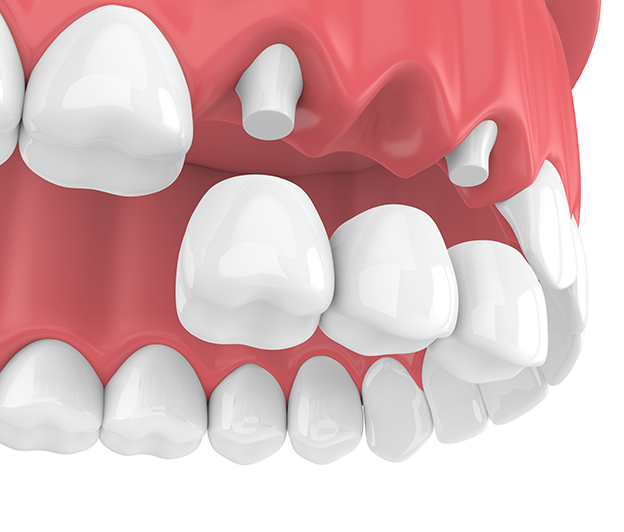
Bridges Treatment
A dental bridge is simply a dental prosthesis which bridges the gap between teeth. You might be required to opt for dental bridges if one or more of your teeth are missing or decayed. In the case of hypodontia or congenital absence of a tooth, dental bridges can be recommended.
Types of Dental Bridge
A dental bridge can be fitted in two ways to the existing teeth: fixed or bonded.
1-FIXED DENTAL BRIDGE- first type of bridge
The most common type of dental bridge is the fixed dental bridge. This is because of durability and effectiveness.
For a fixed dental bridge, the prosthesis is made up of a crown, and artificial teeth called the Pontiacs. The crown is situated on either side of the prosthesis while the Pontiacs are in the middle.
A fixed bridge is a reliable and durable dental solution. It is always difficult to notice that the teeth are artificial.
However, the major disadvantage of a fixed dental bridge is that you have to‘sacrifice’ two healthy teeth. But if you choose to replace your tooth bridge later with an implant, there will be the need to fix crowns for the adjacent teeth.
There are two types of fixed dental bridge available: Front teeth bridge & Cantilever Bridge.
1-Front Teeth Bridge
A front teeth bridge is the best dental bridge for gaps or missing front teeth. This may require two crowns on the sides because of the great biting pressure on the front incisors.
2-Cantilever Dental Bridge
A cantilever bridge is a fixed dental bridge that is fitted via a crown on one of the adjacent teeth. It is most often used when only one natural tooth is next to a missing tooth.
A major advantage of cantilever bridges is that they need just one healthy tooth to be drilled into an abutment. The main disadvantage of the cantilever bridges is that they end up exerting extra pressure on the supporting tooth. Hence, it is not recommended for areas of biting and chewing.
2-BONDED DENTAL BRIDGE – second type of bridge
A bonded dental bridge (also referred to as Maryland Bridge) is best used when there is only one tooth to replace. It has metal ‘wings’ on both sides which are attached to the inner edge of the adjacent teeth.
It helps to preserve the healthy adjacent teeth; however, it is not as durable as a fixed bridge.

Book your treatment today


